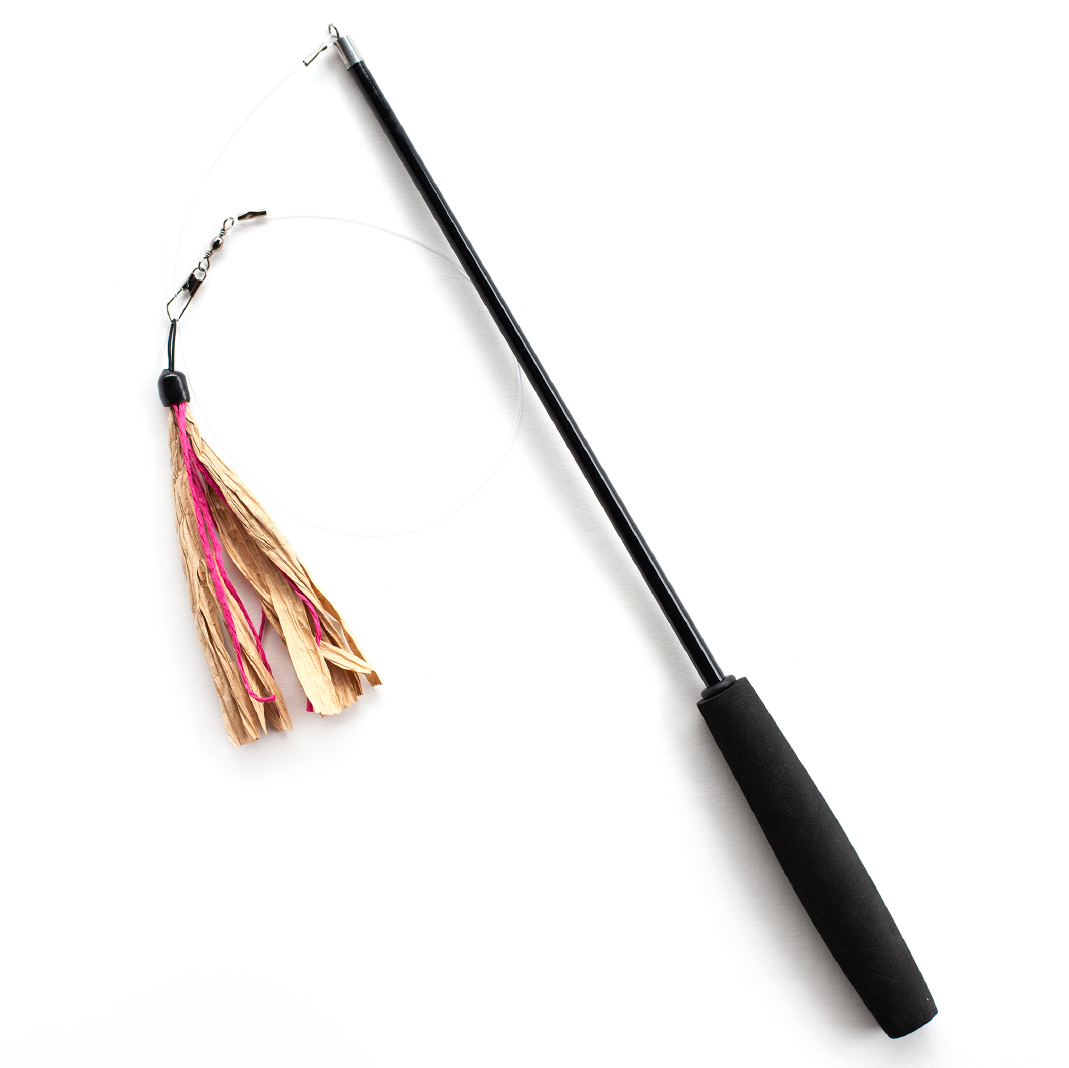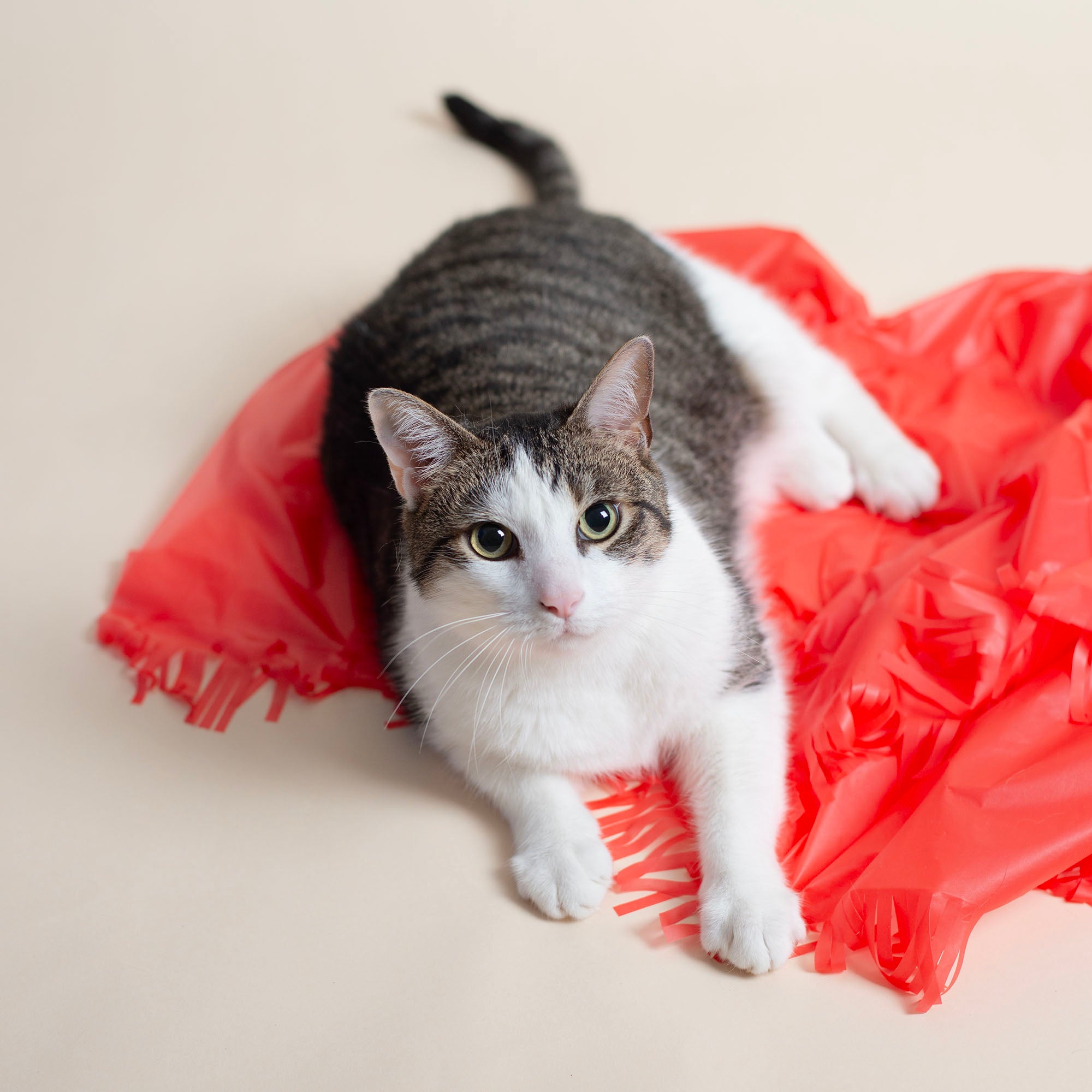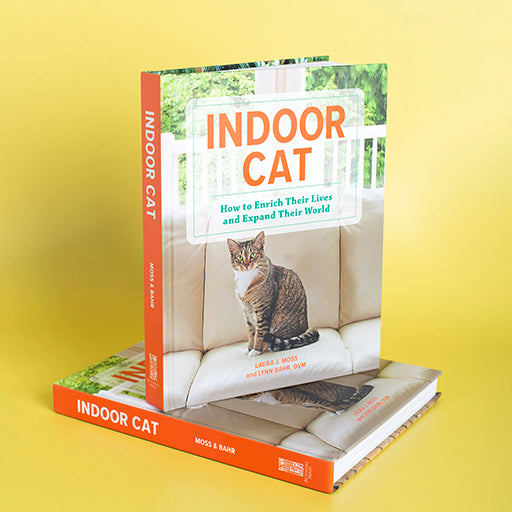Cats and Dogs: Why Do We Treat Them Differently?
As animal stans, we could never choose between cats or dogs (or bunnies, quackers, birbs, etc.). But, for some odd reason, the way we subconsciously – or consciously – treat our dogs and cats is worth comparing and exploring. No, this isn't a shame post and there is no finger pointing to make you feel bad. But when you hit pause and take notice, you'll start to see these differences everywhere, on social media, in conversation with others, or even in your own home! It's like Lana says, when you know you know.
Declawing vs. Nail Trimming: The (Not-So) Great Debate

One big difference in attitude towards cats and dogs is how we perceive and react to destructive behaviors. Dogs may scratch flooring, chew on furniture, and damage doors, but no one would ever consider declawing them. Instead, we provide dogs with regular nail trims and appropriate chew toys to redirect these behaviors. For cats, similar humane alternatives include providing a variety of scratching posts and pads made of different materials and regularly trimming their nails. Use cat attractants like catnip or silver vine to entice your cat to dig in. Remember, where you put these scratch posts is important, so test out a few spots until you find the sweet spot. (And psst, there may be more than one!) This approach respects their natural instincts while protecting your furniture and maintaining their overall well-being.
Outdoor Adventures: Because Cats Deserve Fresh Air Too!

I've never met a dog owner who doesn't take their pup pal outside every day for something, whether it's a walk, a ride to the store, and yknw, to the bathroom. Dogs going outside is something we as a society are on the same page about. You'll see them on walks, shopping in (some) stores, and in the car for adventures. They benefit from fresh air, sunshine and exercise. Many dog owners even go the extra mile to fence their yards, creating safe spaces for their dogs to play. On the other hand, very few cat owners consider ever letting their cat outside. But, many cats can safely enjoy outdoor play if owners take the right precautions. If you live on a low-traffic street, in a cul-de-sac, or have a yard and open space, your cat can benefit from outdoor time! Supervised outings, leash training, or building a catio—an enclosed outdoor space—give your cat to experience the outside world safely. Building a window unit, like the one illustrated in my book "Indoor Cat: How to Enrich Their Lives and Expand Their World," can be a practical solution. Window perches can give your cat a safe and stimulating view of the outdoors, significantly enhancing their quality of life.
Exercise and Stimulation: Get Your Cat Moving and Grooving

Dog parents instinctively know their pups need exercise, so they walk them, throw the ball, or run with them. Cat parents, on the other hand, accept the trope of a "lazy housecat," and as a result, cats often miss out on regular physical activity. Don't feel bad though! It's been conditioned into our brains thanks to a certain lasagna eating cat and many other cultural references. But remember what Lana said? When you know you know! Making it a priority to play with your cat, just like you would with a dog, is vital to their health and happiness. Cats are hunters so use toys that draw out those chase-and-catch behaviors, like wand toys, laser pointers, and interactive puzzles. Regularly rotating these toys can keep your cat engaged and prevent boredom.
Have you seen that TikTok account where the guy climbs up trees to rescue cats who've gotten stuck? Highly encourage you to check it out if you haven't seen his stuff. But the point is, cats love to climb! So maybe instead of sending your cat up a tree, try setting up a safe, vertical space for those sharp claws to climb! Cat trees, shelves, and window perches can turn your home into an exciting playground.
It doesn't have to be complicated – simple games like dropping treats as you walk around the house can stimulate your cat's natural hunting instincts and keep them moving. Incorporate these activities into your daily routine to ensure your cat stays active and healthy.
Buying Toys: Purrfect Playtime Solutions

In homes with both dogs and cats, dog toys often outnumber cat toys. Understandably, one reason is dogs may destroy or eat cat toys leading pet parents to pass on buying them. Hot tip: give you dog something else to do in another room and bust out those cat toys for those small beans to play. Like we mentioned earlier, one of the best toys to get your cat moving around is a wand toy. 10/10, no notes.
We're biased, but for good reason! Wand toys encourage movement and hunting, and requires you, a beloved cat parent, to play, too! And we all know that when we play together, we tighten our bond. Plus you can keep an eye on your cat to make sure they're playing safely. So if you need to, pre-occupy the pup while you and the whiskers get to play hunting!
If you think your cat isn't interested in playing, here's another hot tip: think like a lizard, or bird, or bug! A wand toy is the easiest way to mimic the movements of prey – darting or fluttering about – to catch your cats attention and engage the round pupils. Vary the speed and direction to keep your cat interested. Remember, patience is key—some cats may take a little time to warm up to playtime. If your cat stops what they're doing to watch the wand toy, that means they're interested and calculating. With persistence, you’ll likely see them become more active and engaged.
These are just a few differences in how we treat dogs and cats, but by understanding and addressing these differences, we can make sure the smallest beans in our house lead enriched, happy lives. A little effort goes a long way in making your home a better place for your cats and dogs.
Have questions? Drop a comment below! And let’s give our cats the life they deserve—full of play, exploration, and love.
Share:
3 comments
-
Is there any product that I can use in my house to kill fleas without harming my cat.
Christine Scott on
-
Wow, as someone who works in an animal shelter I sat bolt upright when I read the opening lines of this article. Are they suggesting letting cats roam outdoors? Don’t they know that free-roaming house cats have half the life expectancy of indoor cats? But reading on, the article is absolutely right—it is very possible for a cat to enjoy the outdoors in the ways the article suggests which are safe and mentally healthy for felines. I would never consider letting my cats roam free, but my cats spend much of their day outside either on harness walks or in their catio where they can see and smell nature without killing birds, getting hit by a car or attacked by predators.
Lynne on
-
Personally, I have a deep and abiding dislike for dogs. Have had to care for two in my life — never again. I’d be hard pressed to name one thing about dogs that I like.
That said, our family felines have scratching posts and pads, activity centers and trees throughout the house, lots of windows, screened doors, and a couple of window perches. In a previous home we had a beautiful catio and secured, cat-fenced compound, neither of which are practical here. But I would not leash-and-harness walk cats outdoors — too many potential problems, and when I’ve done this in the past, cats have not enjoyed it at all.jmuhj on








